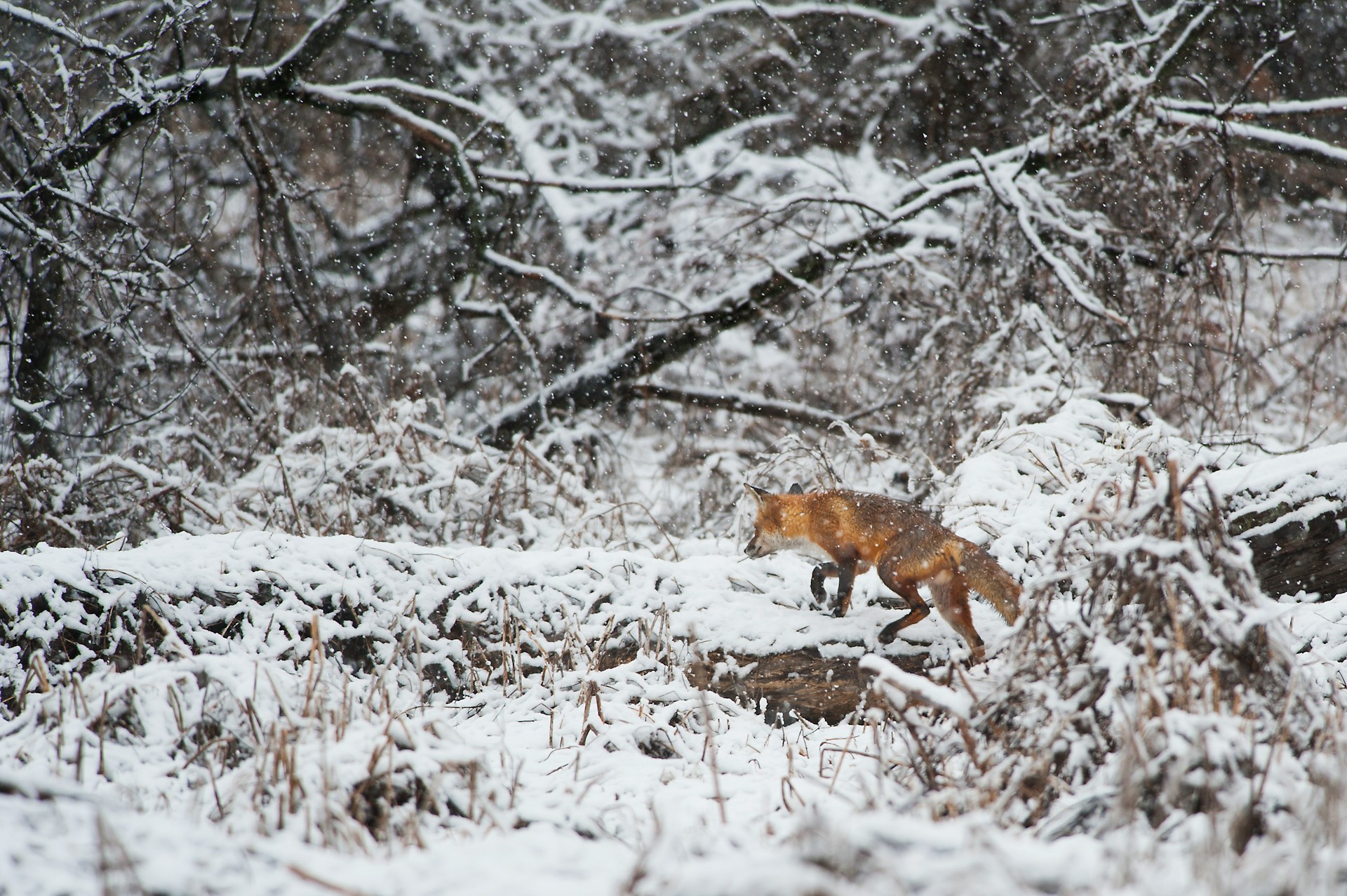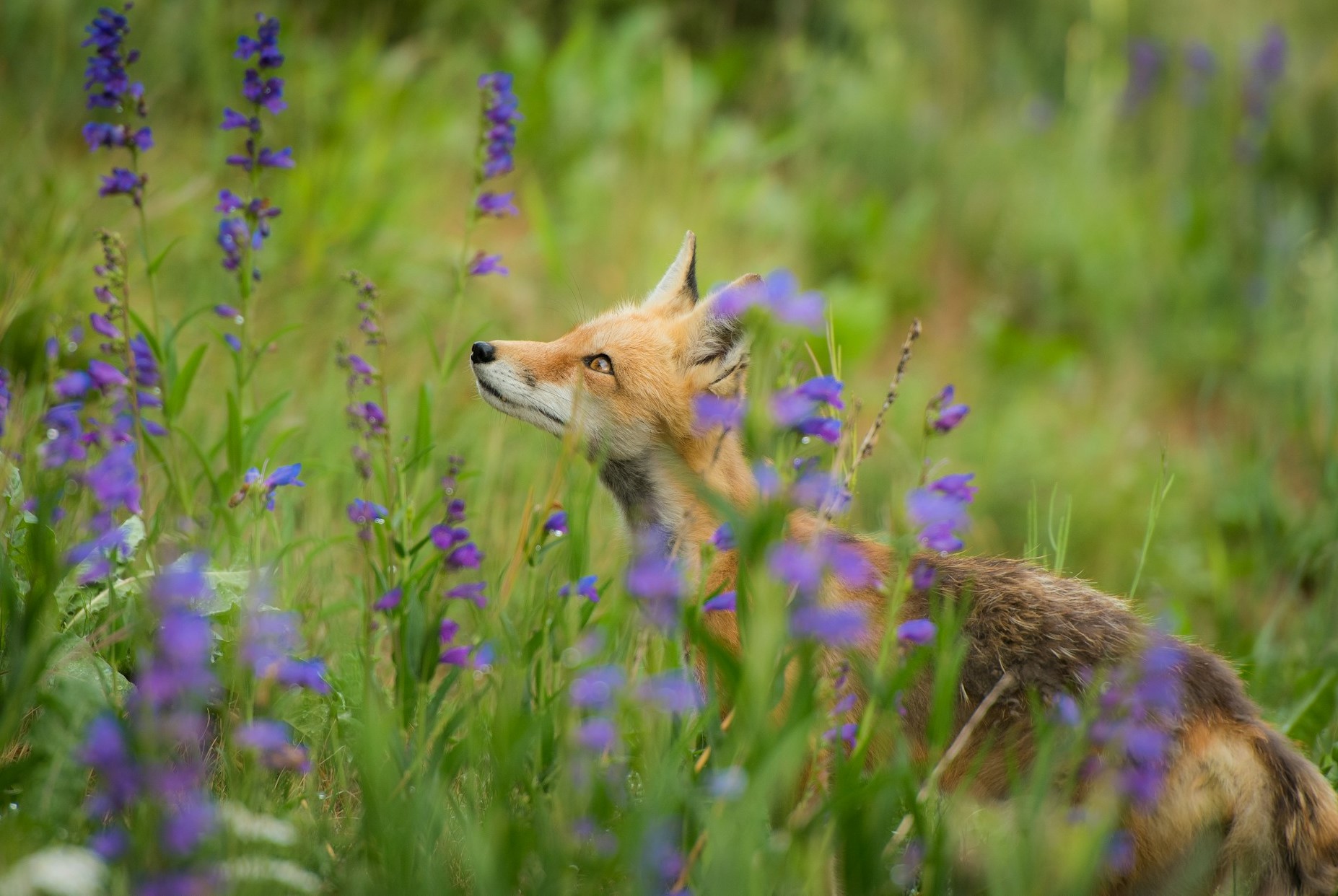Foxes are clever and elusive creatures, making them a fascinating subject for nature photographers. Spotting one in the wild requires patience, respect, and a good understanding of their behavior. This guide will help you find foxes ethically, offering practical tips to increase your chances while appreciating the beauty of these animals in their natural habitat.
Understanding Fox behavior
Foxes are incredibly adaptable animals, able to thrive in a wide range of environments. They can adjust to almost any surroundings, from dense forests and open grasslands to urban neighborhoods.
They are primarily nocturnal. However, they often move and hunt during the early morning or late evening hours, known as dawn and dusk. These quiet times of the day are the best opportunities to observe their activity. During the daytime, foxes usually rest in dens or under thick vegetation, making them harder to spot.
Seasonal changes also influence fox behavior. In winter, they are highly active, covering large areas to search for food. Late winter marks the breeding season, and you might hear their vocalizations—short, sharp barks or eerie howls. By spring, foxes are focused on raising their cubs. They often remain closer to their dens during this time, making it easier to locate them if you know what to look for.
Foxes are opportunistic feeders with diets that vary depending on their surroundings. They hunt small mammals like mice and rabbits but also eat birds, insects, and fruits. Observing areas with an abundance of food—such as fields with rodents or berry patches—can improve your chances of finding them. In urban areas, foxes are often drawn to garbage bins, compost piles, or leftover pet food.
Territorial markings are another clue to fox activity. They use scent—urine, scat, or scratched ground—to define their territory and communicate with other foxes. If you notice these signs while exploring, it’s a good indication that foxes are nearby.
Choosing the right location
Start by researching areas known to have active fox populations. National parks, nature reserves, and rural landscapes are often good places to begin.
In suburban or urban settings, foxes are commonly found near wooded edges, overgrown lots, or areas with limited human activity. Local wildlife organizations or online forums can provide valuable insights into specific locations where foxes have been spotted.
Look for signs of fox activity to confirm you're in the right place. Tracks are a reliable indicator; fox footprints are small and narrow, with four distinct toe marks and a visible claw imprint. Scat is another clue, often dark and pointed at one end, containing fur, bones, or seeds.
You might also find dens, which are typically located in hidden areas like under bushes, in hollow tree bases, or along riverbanks. Active dens usually have a well-trodden path leading to the entrance and may be surrounded by food scraps or fur.
Pay attention to the surrounding habitat. Foxes prefer areas with plenty of cover, such as tall grass, dense shrubs, or fallen logs. These features provide shelter and safety.
Open fields or meadows near these hiding spots are also ideal hunting grounds, where foxes search for small prey like mice and rabbits. Water sources, such as streams or ponds, can also attract foxes, as they need to drink and may hunt animals drawn to the water.
When exploring urban areas, look for quieter spots with minimal disturbance. Foxes often use parks, gardens, or neglected spaces as safe routes. Keep an eye out for areas with food sources, such as trash bins, compost piles, or fruit trees, as these can draw foxes closer to human habitats.

Field techniques
Start by approaching the area quietly. Foxes are highly alert and will flee at the first sign of a threat. Walk slowly and carefully, avoiding loud noises or sudden movements. Stay downwind as much as possible, as foxes have an excellent sense of smell and can detect your presence from far away if the wind carries your scent toward them.
Use natural cover to your advantage. Foxes prefer areas with dense vegetation, tall grass, or fallen logs where they can stay hidden. Move through these areas slowly, using trees, bushes, or rocks to conceal yourself. If the terrain is open, consider using a portable hide or camouflage netting to blend in.
Be observant and look for signs of movement. Foxes often dart quickly through their environment but pause frequently to listen or sniff the air. Pay attention to areas where their prey, such as mice or rabbits, might be active, as foxes often hunt there. Binoculars can help you scan the area without getting too close.
Listen for sounds that might indicate a fox is nearby. Foxes make a range of noises, including barks, howls, and yips. In quiet surroundings, these calls can guide you to their location. Be especially alert during the breeding season, as vocal activity increases.
Patience is key. Foxes are naturally cautious and may take time to emerge or move into view. If you’ve identified a promising area, it’s often worth staying still and waiting for them to come to you rather than moving around too much.
Once you spot a fox, stay as still as possible. Sudden movements can spook them, causing them to retreat. If you’re photographing them, use a tripod to avoid unnecessary motion and a camera with silent shooting mode to minimize noise.
Avoid direct eye contact. Many animals perceive this as a threat. Instead, keep your eyes slightly averted while observing them, as this helps you appear less intimidating.
Ethical considerations
The first rule is to maintain distance. Getting too close to a fox can scare it or disrupt its natural behavior. If a fox seems agitated or begins to retreat, it’s a sign you’re too close and need to back away.
Avoid disturbing dens. Foxes use dens for shelter and to raise their cubs, especially in spring. Interfering with a den can cause stress and may even lead a mother fox to abandon her young. Never try to uncover a hidden den or linger too close for long periods.
Do not feed foxes. While it may seem harmless, feeding them can create dependency on humans, leading them to lose their natural instincts or associate people with food. This can put foxes in danger, especially in urban areas where they may encounter vehicles or hostile environments.
Respect the environment. Foxes rely on their surroundings for survival, so it’s essential to leave no trace during your visit. Avoid littering, damaging vegetation, or leaving behind any items that could harm wildlife.
Avoid baiting or luring foxes. Using food or scents to attract them is unethical and can alter their natural behavior. Foxes should remain wild, relying on their instincts to hunt and survive without interference.
Share information responsibly. If you find a location where foxes are active, avoid widely sharing the details online or with people who might exploit the information. Instead, contribute to conservation efforts by sharing your observations with trusted wildlife organizations.
Lastly, always prioritize the well-being of the foxes over your own goals. Whether you’re observing for pleasure or photographing them, the aim should be to witness their natural behavior without impacting their lives.
